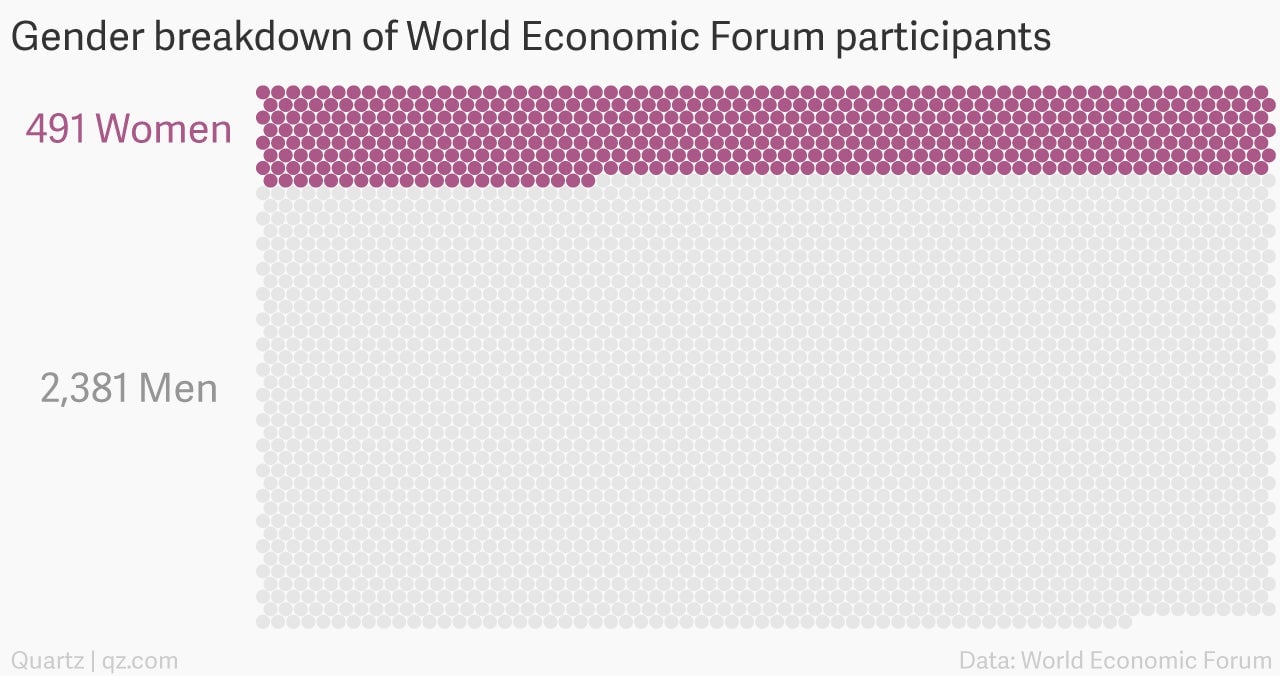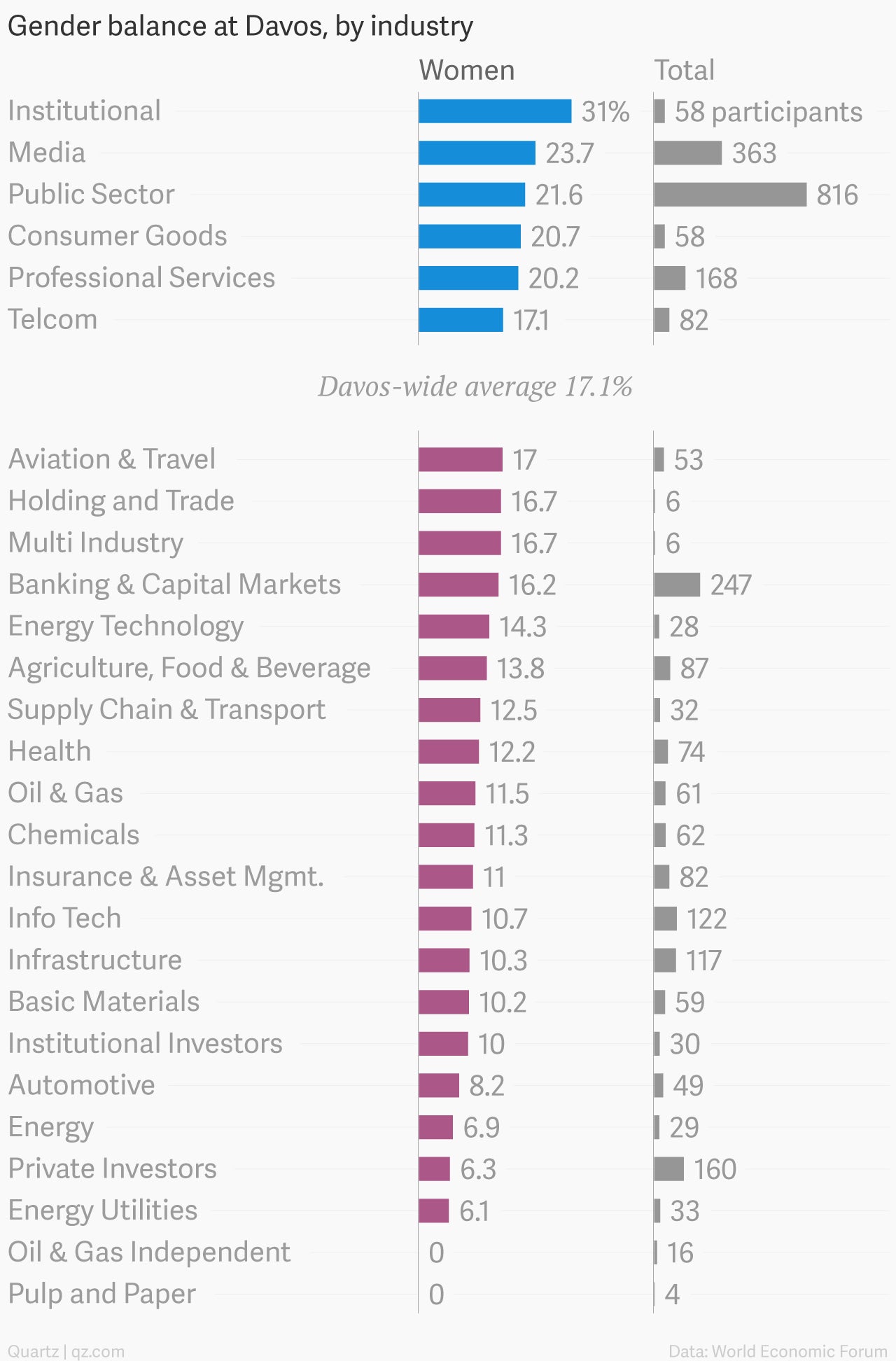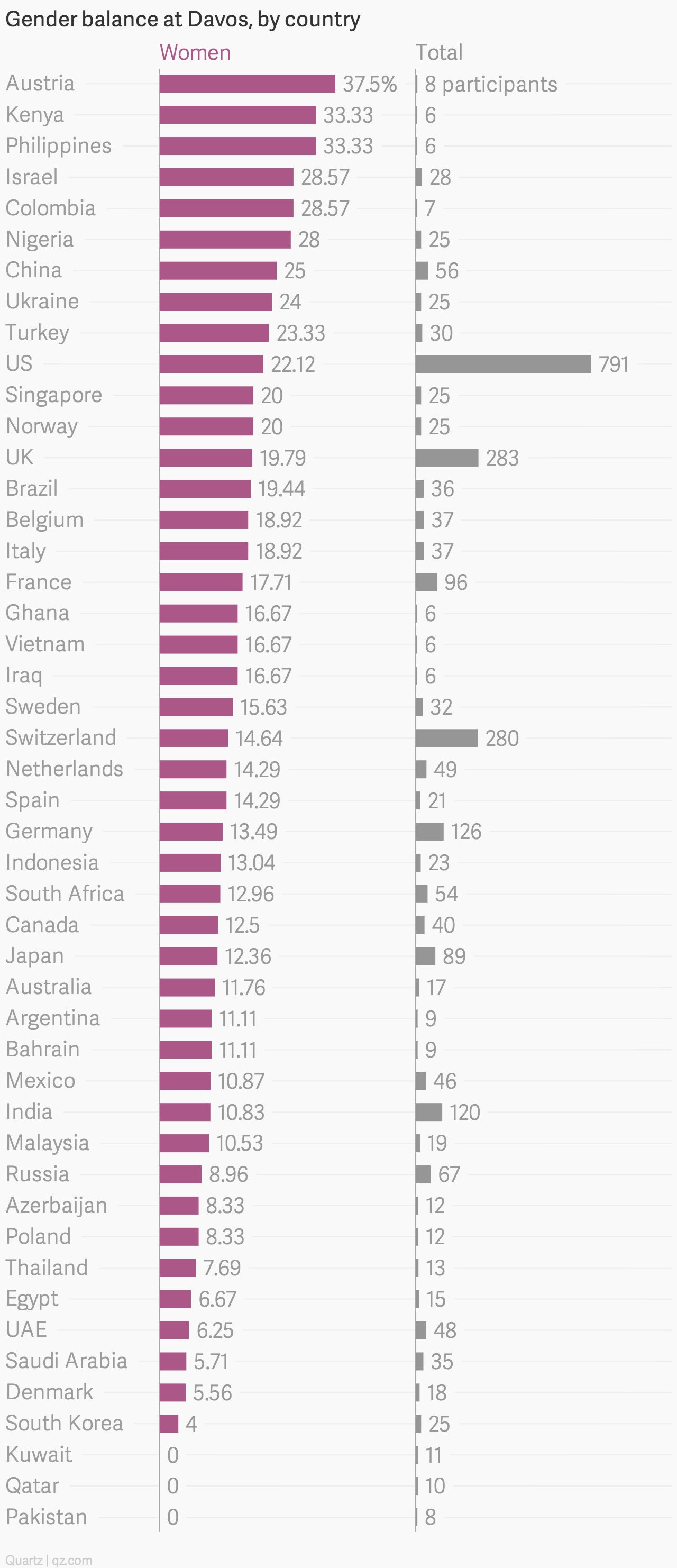Davos is still mostly a men’s club
The World Economic Forum says it’s trying to encourage more of its members to bring women to Davos. Its members aren’t doing a great job. This year, only 17% of participants at the annual invitation-only conference are women.


The World Economic Forum says it’s trying to encourage more of its members to bring women to Davos. Its members aren’t doing a great job. This year, only 17% of participants at the annual invitation-only conference are women.

The gender imbalance underscores how women are often left out of discussions debating and shaping policy.
WEF members have an incentive to bring women. Businesses at the highest level of membership get four tickets to Davos and can distribute them to top employees at the company’s discretion. If one of those tickets go to a woman who is an executive or board member, the company is rewarded with a fifth ticket. Saadia Zahidi, who heads the Gender Parity Programme at the WEF, says that more members are taking advantage of this opportunity in 2015 than five years ago.
Still, the numbers aren’t budging. Last year, 15% of participants were women; the year before, 17%.
WEF has told Quartz for the past two years that the gender disparity at Davos is a result of the current state of global leadership. This year is no different. Zahidi told Quartz, “Unfortunately, the gender ratio here in Davos is a reflection of global leadership as a whole.”
Some invitees are asked to attend solely based on their job function, such as the president of Harvard University, who is currently Drew Faust, a woman.
Here’s what the representation of women at Davos looks like by industry:

The majority of women at Davos are listed in one of two categories: “Public Sector, Civil Society, Arts, Academia” and “Media, Entertainment & Information.” Television journalists are typically listed in the latter category.
Among nations with more than five delegates, Austria sent the highest portion of women—three out of their delegation of eight. The delegations with the most women in them are also the delegations with the most participants overall: the US, UK, Switzerland, and Germany. There are no women in the Kuwaiti, Qatari, or Pakistani delegations.
